Text
Accessible Raised Beds
Hey y'all!
I've been doing some more work on the accessible raised beds, and it looks like we might start building. I'll drop some photos of the process when I start for anyone interested, but here are the plans:
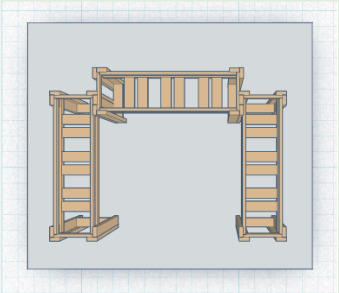

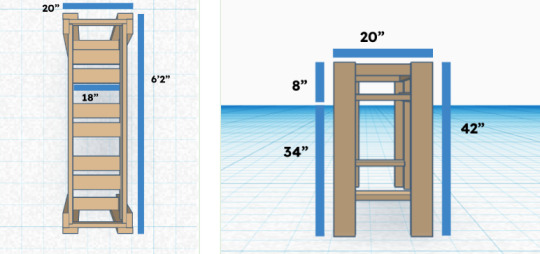



The grey mats are Trax Mats, designed for people with mobility devices. They can be found here: Trax Mats
Warmly,
records-of-dirt
#solarpunk#permaculture#gardening#cottagecore#community garden#accessibility#accessible gardens#records of dirt
3 notes
·
View notes
Text
Q: Accessible Garden Beds
Hey y'all,
I'm putting together a set of three table/garden beds for the Special Education classroom at my school. We're planning on putting Trax mats below it for wheelchairs, but I wanted to know if anyone had any suggestions for it's design!


I've worked with the teacher for measurements, but want to double check the height will be alright.
Warmly,
Records of Dirt
57 notes
·
View notes
Text
Create Your Own Soil Profile!
A garden’s soil is the base of all its growth, and knowing how to properly interact with your soil can make all the difference!
Step 1 Site Observations
Take a few photos of your site (project area)
Note down:
what vegetation is there?
is it near water?
the slope
approximate exposure to sun
Step 2 Take a soil profile
Set out a tarp or a garbage bag
Dig a hole about 3 feet deep (you may want a friend’s help!)
Place that soil in piles onto the tarp, sorted into different soil layers
Remember horizons! (O, A, E, B, C, R(bedrock))
Make a sketch of a soil profile, and measure the depth of each horizon
The top of the profile should start with 0 cm
Refill the hole, and try to return each type of soil in order!
Step 3 Build your profile
Describe each layer of soil, moisture/structure/color/smell

Use the “feel” method to take notes

Step 4 Drainage
Dig a hole 1 foot deep and 1 foot wide(ish)
Fill the hole with water and measure how long it takes to fully drain
An ideal time is around 10 to 30 minutes!
Note down the time
Keep in mind that even if the soil type would suit desert-like plants more, think of the weather. If it rains a good deal the drainage can matter less(or more!)
Step 5 Biological Activity
Bury a pair of cotton underwear(I know it’s silly)
Wait about 60 days
Unearth the undies, the more tattered they are the more activity there is!
Step 6 pH Testing
OSU Lab for Oregon, and many states have soil testing labs
Soil pH Meter
DIY Test
Step 7 Hardiness Zone
This just takes looking at a map!
Hardiness zones can tell you about the weather’s highs & lows in a particular area
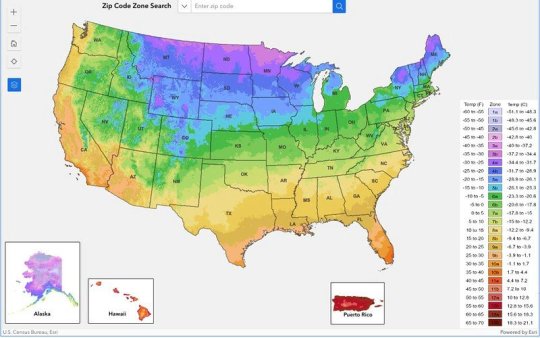
USDA Plant Hardiness Map
And that 's it! It's a lot, and you don’t have to do everything. Each step can provide a better view of how to properly support your garden, and can be fun activities to do with friends and family!
I’ve included a template for a complete soil profile, but feel free to make them as fancy as y’all want!
Sincerely,
records of dirt
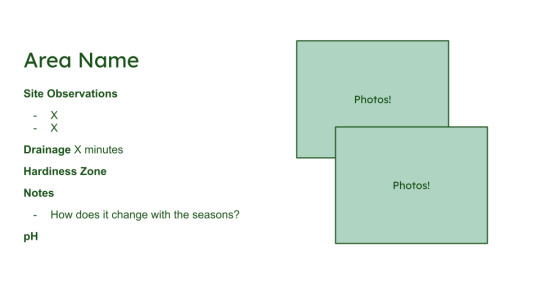

394 notes
·
View notes
Text
Gardening Resources
Books
The Garden Primer by Barbara Damrosch
Residential Landscape Architecture by Norman Booth & James Hiss
Gardening for Butterflies by The Xerces Society
Secrets of Plant Propagation by Lewis Hill
Sepp Holzer's Permaculture by Sepp Holzer
Homegrown Herbs by Tammi Hartung
10 notes
·
View notes
Text
PNW Gardening Resources
Books
Northwest Gardener's Handbook by Pat Munts & Susan Mulvihill
Northwest Home Landscaping by Roger Holmes & Don Marshall
Growing Vegetables West of the Cascades by Steve Solomon
PDFs
GardenSmart Oregon, a Guide to Non-Invasive Plants
The Meadowscaping Handbook
Growing Your Own, Growing Vegetables in Oregon
Portland Plant List
Native Host Plants & Butterflys Willamette Valley
Guide to Collecting Wildflower Seed
The Oregon Rain Garden Guide
Native Plants for Willamette Valley
Guidelines for Environmentally Friendly Trails
Programs
Backyard Habitat
Oregon Master Gardener Program
The Meadow Project
Websites
PNW Flowers Database
10 notes
·
View notes
Text
Basics of Soil
Soil has three main ingredients:
Minerals
Open spaces - which can be filled with air or water
Organic materials - from decomposing plants & animals
Then, these ingredients form different levels or horizons.
Soil Horizons

When I say “rock”, that is an oversimplification!
Rock Types
There are three basic types of rocks:

Soil Composition
How do we define a soil? We look at what type of particle it's mostly made of.
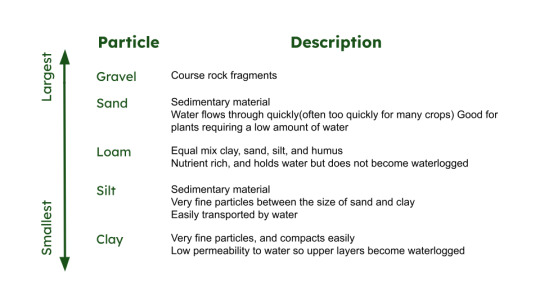
Figuring out what type of soil you have is quite important to a healthy garden, but we’ll cover how to do that a little later.
For now, let's move on to soil quality!
Soil Quality
Soil quality is typically determined based on eight main components.


Up to this point, we’ve talked about soil as something inorganic - but soil is alive.
It teems with life, and when changing the soil in any given area, it's incredibly important to think about how those changes will affect the organisms already living there.
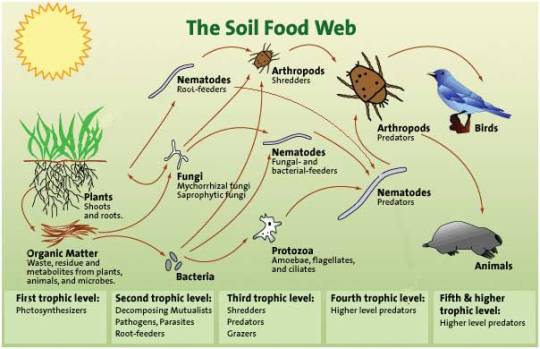
I hope y’all learned something, and have a great day!
Sincerely,
records of dirt
Attributions:
<a href="https://www.flaticon.com/free-icons/volcano" title="volcano icons">Volcano icons created by Freepik - Flaticon</a>
<a href="https://www.flaticon.com/free-icons/diamond" title="diamond icons">Diamond icons created by Freepik - Flaticon</a>
<a href="https://www.flaticon.com/free-icons/fossil" title="fossil icons">Fossil icons created by max.icons - Flaticon</a>
7 notes
·
View notes
Text
The Shelf
Resources
PNW Gardening Resources
General Gardening Resources
Informational Posts
The Basics of Soil
Creating Your Own Soil Profile!
Building & Planning
Accessible Raised Beds Plans
How to Plan a Garden
2 notes
·
View notes
Text
How to Plan a Garden
When creating a community or school garden, records are important!
Eventually, someone else will take care of the space and records show what the space looked like, what you did, and how they can properly take care of the space.
Good records require a few basic elements:
The Original Design
Photos of the space before you’ve done anything
A map of the space with dimensions & notes on terrain(slopes, holes, ect.)
What plants were already there
Notes on their original condition
How long they were there(if you know)
Your Design
A dimensions-accurate drawing/map of your design
A list of what you plan to change
Be as specific as possible!
Plant Record
Every plant in the garden
Name
Photo(preferably two, one of “in bloom” and one of “dormant”)
How to care for them
Past issues
Common invasive/non-native plants & how to get rid of them
Plants that cause itching/rashes
Monthly Records
Record major changes(planted, took out, issues, etc.)
Weather (cold, hot, rainfall - how did it impact the garden?)
Tips & techniques (records are also to help you care for your garden)
It can feel like a lot, but it doesn’t have to be fancy!
Records tell the story of the land, and guide current and future generations.
I’ve included a few samples of garden designs, and plant lists, as a starting point!
Happy gardening y'all!
Sincerely,
records of dirt

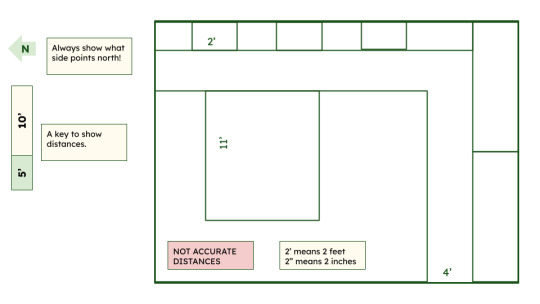

16 notes
·
View notes